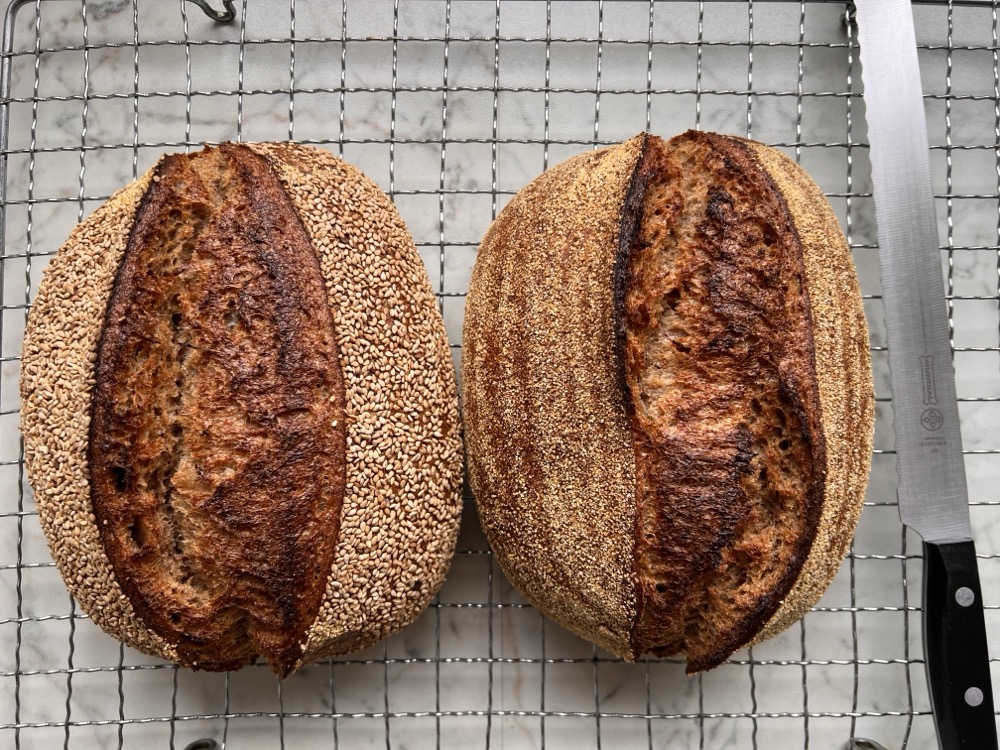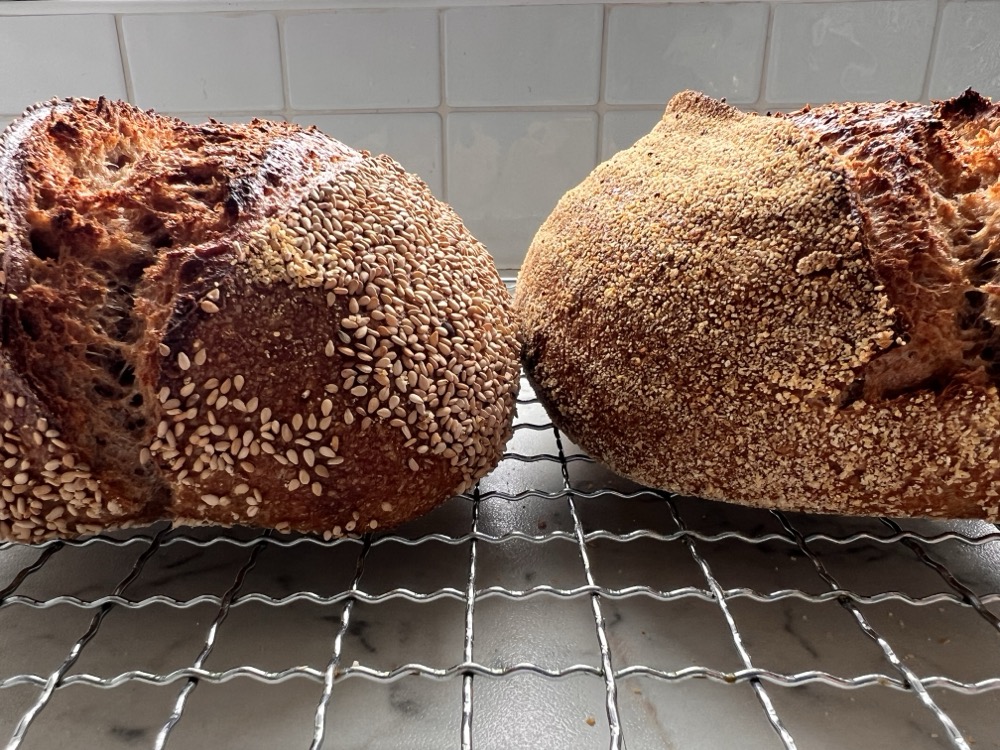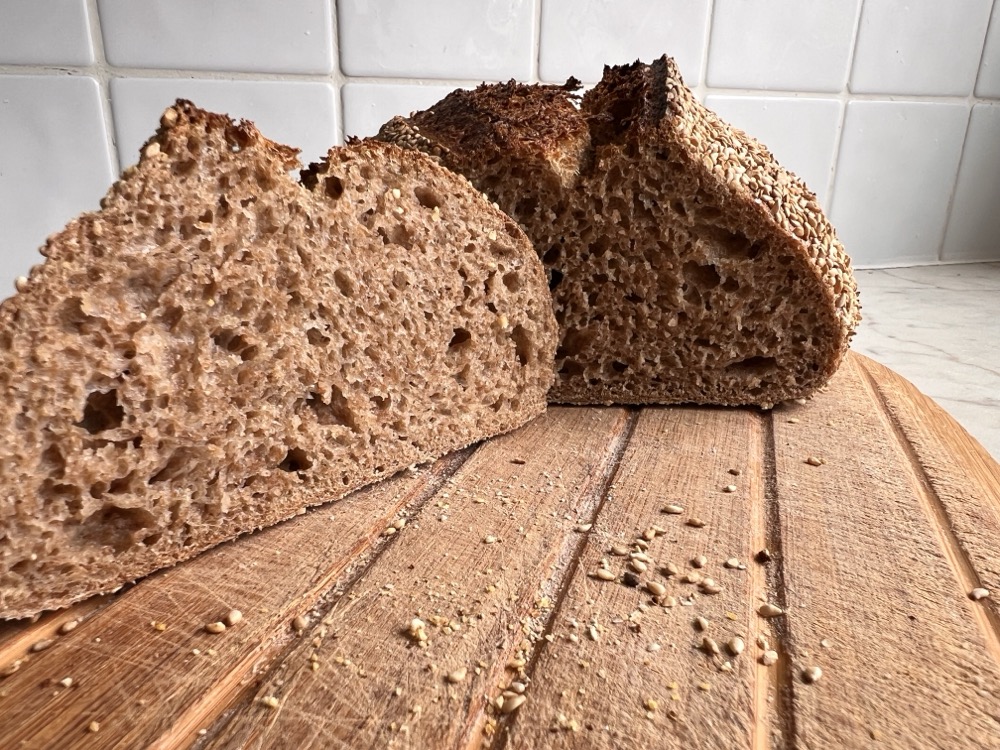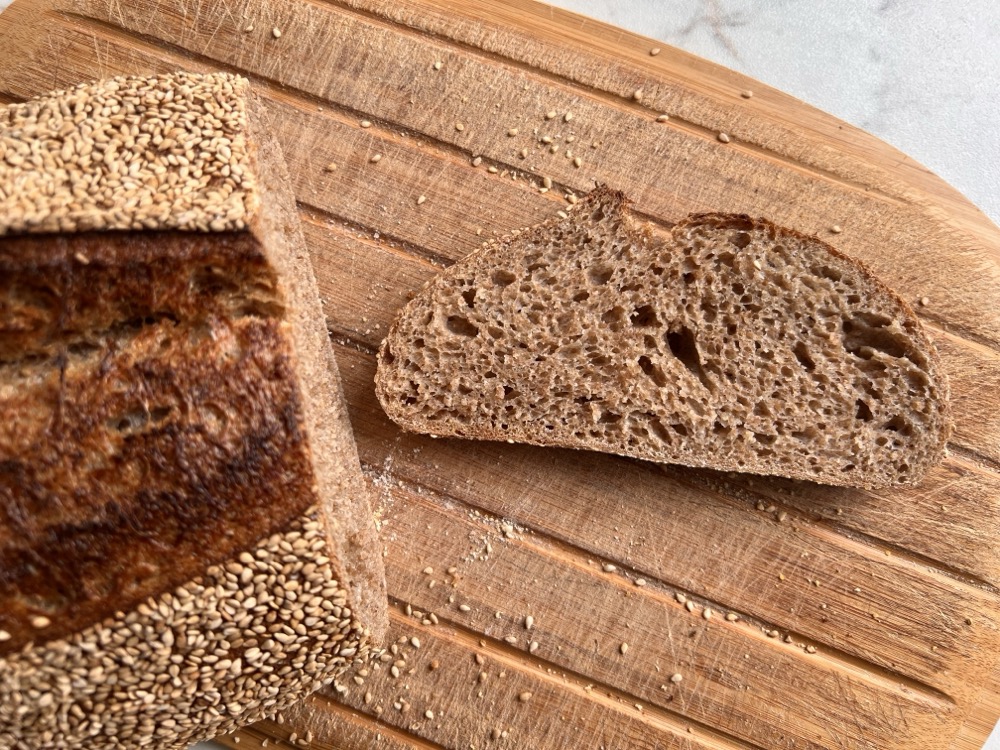Lately I have been scalding various grains like emmer and khorosan to add moisture and flavour to doughs.
Earlier this month I thought I’d try the same thing with wheat bran. In other words, rather than just fermenting whole wheat flour I hand sifted the flour, cooked the sifted out bran, then added that cooked bran (or scald) back into the dough as part of a true autolyse.
What’s going on here?
Wheat bran is good for us — it rich in fibre, vitamins and minerals; it makes us feel full; and it slows down the absorption of carbohydrates (thereby reducing blood sugar spikes).
But from gluten’s perspective bran is also razor sharp and scythes through gluten strands to make whole wheat bread flatter and more dense.
Scalding the bran softens it and also suspends water in the gelatinised bran. This means the dough is very moist while also staying light and airy.
I used the following bakers ratios and method:
To make the scald I take 15% bran (that is a baker’s percentage of total amount of flour in the recipe) then mix in twice the quantity of boiling water. This is technically a tangzhong rather than a scald. The result is the same but I find with a tangzhong it is easier to predict how much water is being added, absorbed and evaporated.
Autolyse the white flour, high extraction flour and tangzhong/scald for 30 minutes before adding salt (2.5%), levain (20%) and a bassinage (bit more water).
Bulk ferment the dough etc. (I understand this is not a recipe but if you are interested just email me).
Some pictures.



